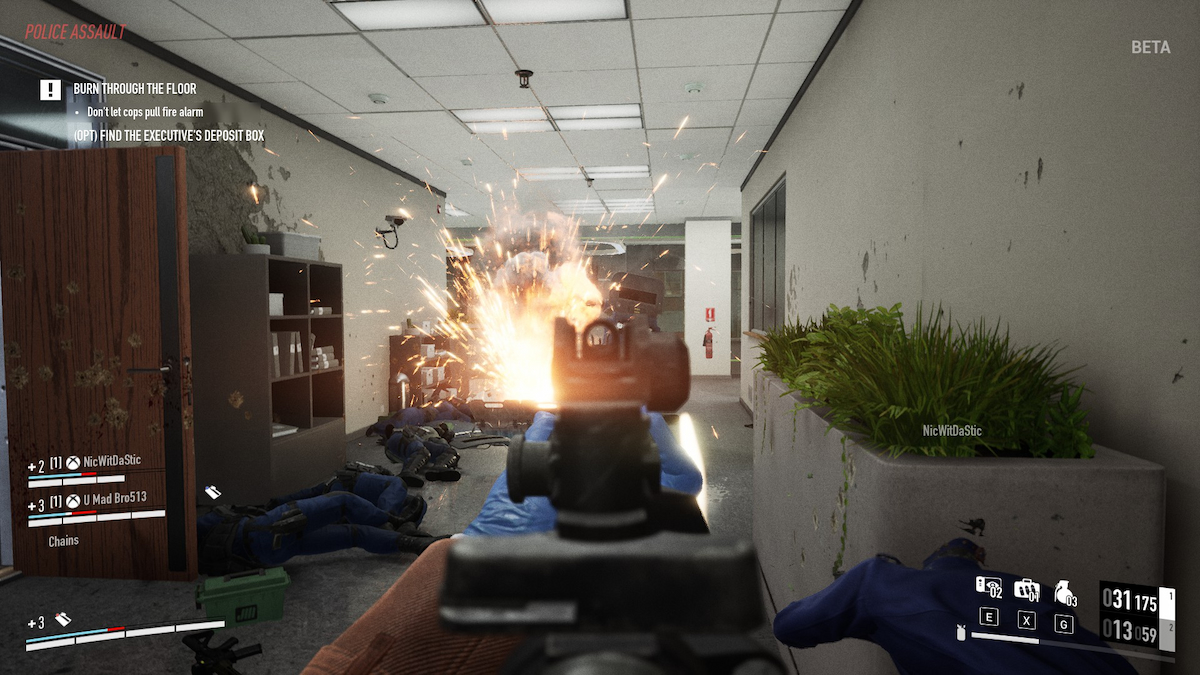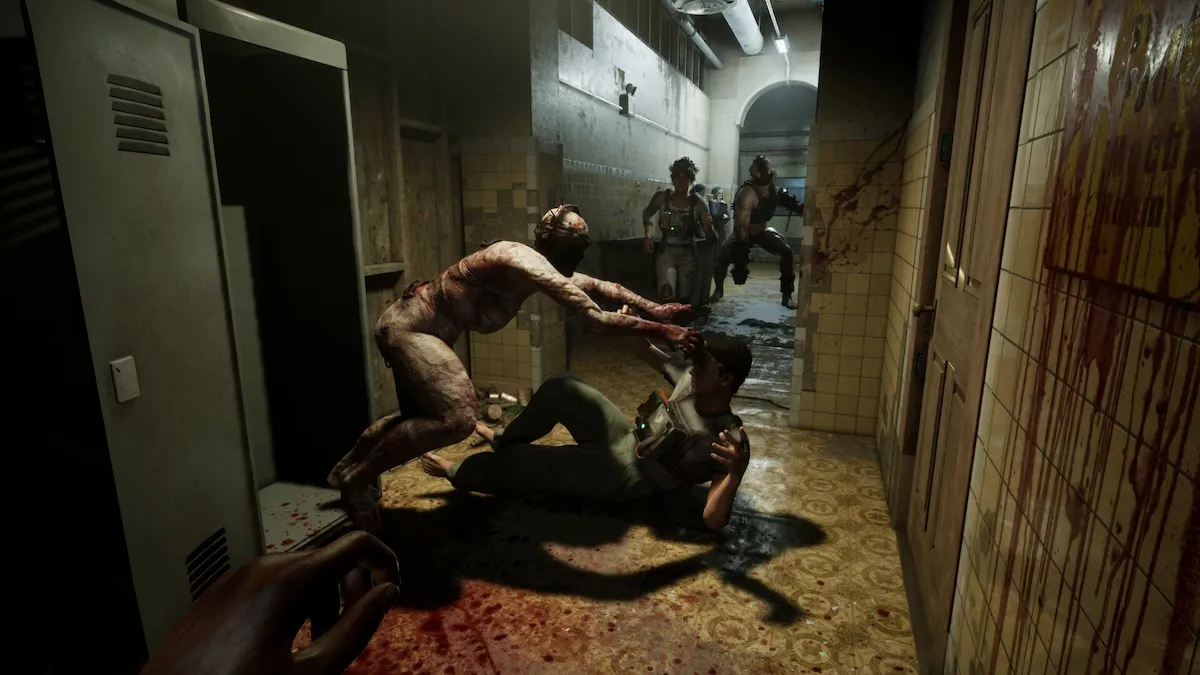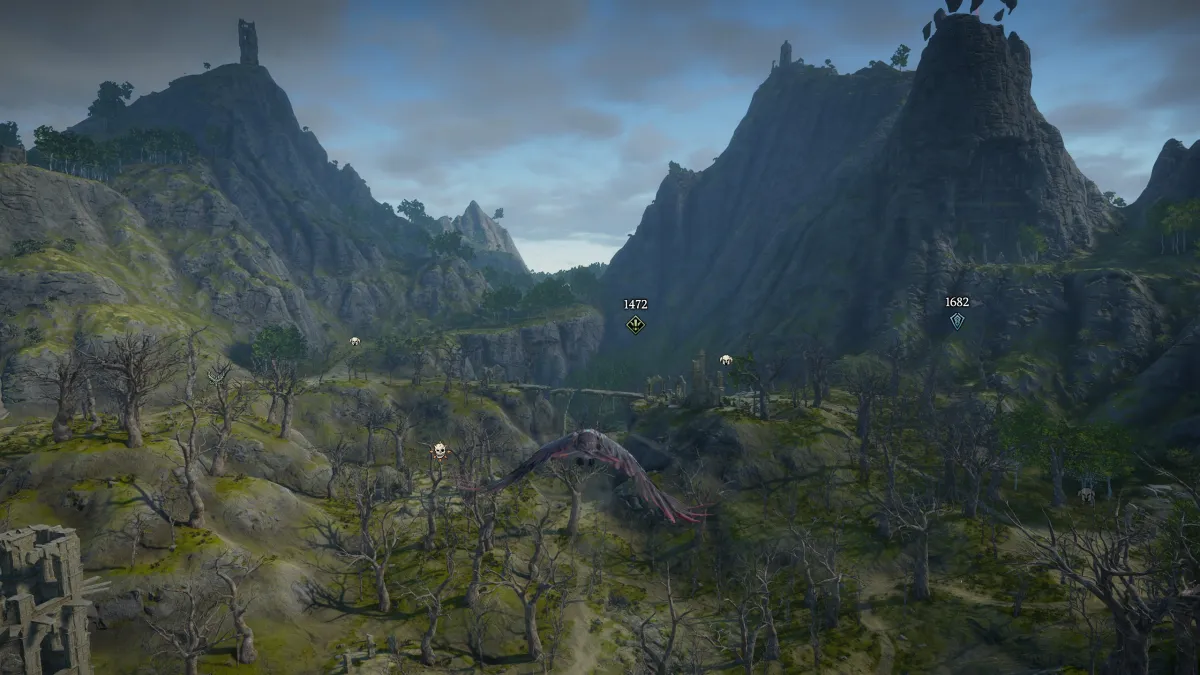I have a giant stack of roguelikes I want to write about. I’m not kidding: I’ve got probably around six or seven sat around on my hard drive, waiting for me to write articles about them, and I just haven’t gotten around to it. Sometimes it’s because of lack of time – most aren’t all that recent, so they can be safely shunted aside in case something more recent needs writing about, and there’s almost always something more recent that needs writing about. Sometimes, it’s just because when I do find time, it proves harder than expected. I’m looking at you, Dungeonmans. I’ve tried to write about that three times and every single time I’ve started, I’ve discovered that it’s been massively updated since the last time I played it so all my prior play doesn’t really mean much.
But today, we’re making a start! And we’re making a start with Crypt of the NecroDancer, because it’s not only relatively timely (having only recently hit Steam Early Access) but because I’ve played it for about 11 hours in two days.

The tiles light up in time with the beat and get brighter as your combo gets higher, giving everything a slightly disco air.
Crypt of the NecroDancer starts with a concept that I suspect was fuelled by a night of absinthe and Rock Band. “What if,” I picture one of the developers drunkenly slurring, “you had a fairly simple roguelike…”
“ADOM!” shouts one of the others.
“No. No, no, no. A simple roguelike. Simple.”
“Angband!” shouts the same one.
“No, simple.”
“Dwarf Fortress!”
“What’s wrong with you? That’s not even a roguelike. No. Like, one which doesn’t have ASCII or lots of hugely complicated keyboard commands. Just something simple. But! But. What if… what if you mixed that with a rhythm-action game? What if you had, like… a roguelike Rock Band?”
And lo, Crypt of the NecroDancer was born. That’s how it went according to my fevered imagination, anyway.

The third zone is divided up into fire and ice sections, and niftily, the instruments playing the music change in each one.
On the surface, Crypt of the NecroDancer is a fairly standard – albeit extremely simple – roguelike. You view the world from a top-down perspective, move around a randomly-generated grid in an attempt to find the stairs down, hit monsters by walking into them, pick up randomly-generated loot and equipment, occasionally find a shop or fight a boss, etc. And it really is unbelievably simple: every single in-game action is accomplished via the arrow keys. Moving? Arrow keys. Attacking? Arrow keys. Planting a bomb? Two arrow keys at once. Eating some food? A different pair of arrow keys.
Most roguelikes, however, don’t force you to move to the beat.
That is the singular driving bit of design behind pretty much everything in Crypt of the NecroDancer: it’s not turn-based, but nor is it exactly real-time. Basically, every beat in the song lets you move once. It also lets the enemies move once right after you do. Muff it up and miss the beat, and you not only don’t move/attack/whatever, but you lose the coin multiplier you’ve built up – and coins net you all sorts of goodies in shops as well as acting as your “score”, so that’s not a very good thing. And yes, it’s such an infectious sodding concept that I’ve caught myself synchronising my real-life actions to whatever beat is currently going through my head. Crypt of the NecroDancer has broken my brain. God help me if I ever again try to write with music on.

Green slimes don’t move and thus are fodder. Black skeletons, on the other hand, take multiple hits and do a lot of damage, so you have to very careful about when to engage them and when to boogie out of range.
The rhythm focus means quite a lot for the gameplay, but more than anything it means that you have to think really fast. Think of pretty much any song, and tap your finger along to the beat. Okay? Every single tap of your finger has to be one move, or you risk either losing your coin multiplier or – worse – taking a punch/sword/axe/horn/tooth to the face. So yes, you have to think really, really quickly.
I wasn’t kidding when I said that every piece of design is tied into this very simple concept, though. This is, for instance, almost certainly why you control the game with just four buttons. You never have to look down at the keyboard to tap I to go into your inventory screen, or scroll through a list of items to drop or consume or whatever. You can do everything instantly, and generally without having to consciously think about it, thanks to the incredibly elegant controls.

If you fancy a real challenge, try the unlockable characters. Bolt starts with a spear, but every level has twice as many beats.
If you’ve ever played a roguelike then you’re probably thinking that having to make two or three moves a second would make it pretty much impossible and extremely easy to die, because enemies will just bum-rush you and murder you, and you don’t have time to think tactically or position yourself. It is extremely easy to die but, again, clever design saves the day. I can explain how in one sentence:
Every single enemy in the game has an individual – but recognisable – movement pattern.
Slimes? Depending on their colour, they just wobble back and forth along a few squares. Skeletons will always try to move towards you, but they can only do that every two beats, and they raise their arms before leaping to another square so you’ve always got a dance-y visual cue. Armadillos roll in whatever direction you’re in, only stopping when they hit an obstacle. Dragons can only launch their devastating breath attacks to the sides, and only move once every few beats. Etc.

Bard, on the other hand, simplifies things by turning it into a standard turn-based roguelike and removing the beat entirely (but keeping the multiplier, which you lose if you get hit). He makes chaotic situations like this a lot easier.
It might take awhile, but you gradually get used to each enemy until you instinctively know what you have to worry about and what you can ignore for the moment. As such, unlike a lot of roguelikes, item drops are very rarely integral to your success. I suspect that – if you’re good enough – it could be entirely possible to finish the game without picking up a single item, just because of the way Crypt of the NecroDancer has been designed. Equally, though, items damn well help you recover from mistakes.
And yet it never gets easy. A combination of multiple enemies at once might require so much quick-thinking it just overloads your brain, and you make two or three suicidal moves in a row because you planned poorly. You might have a weapon you’re not used to, so that might also mess you up. For instance, maybe you’re standing on a tile that will hurt you if you don’t move off it on the next beat. So you try to move off it… oh, but you have a spear, so you actually just hit the enemy that’s two squares away instead of moving in that direction. Time to lose some health!

The lobby gives you a danger-less chance to get used to how the beat-based movement works, and lets you purchase upgrades and new items that’ll add more content to each adventure.
You’ll periodically unlock new bits and pieces, too. Playing in the default mode gets you diamonds, and these can be exchanged back in the lobby – the game’s main menu/hub area/town – for permanent upgrades like more health, or to make new items pop up in chests or on sale in shops. So, even when you fail, you’re probably progressing.
Bizarrely, that’s not even close to everything that’s currently in the alpha. Right now there are three zones out of the planned four, a few unlockable shops and extras, four playable characters, a Daily Challenge (which has everyone who partakes facing the exact same dungeon), a Hardcore mode that forces you through the entire game without your upgrades (which I consider the real game), a Seeded mode that lets you type in a string of characters to generate a dungeon, a slightly easier mode designed for playing with a dance pad, and hell, you can even plug in your own MP3s to change the music – and thus, pace – of each level. I’ve only tried it with one track so far (Gorillaz’ Feel Good Inc.), but it worked rather better than expected.
So yeah, despite being only alpha version 0.370, there’s a lot here and it all works. It looks and sounds great (not least thanks to Danny Baranowsky’s superb soundtrack) and if the battling-to-the-beat doesn’t quite get you going, one of those alternate characters actually just plays it like a regular turn-based roguelike. It says a lot about the fundamental game design that this, while making the game a lot easier, is still really quite enjoyable.
Crypt of the NecroDancer needs more content, certainly, but then it’s an alpha – and what’s in that alpha is already fun, polished, and unique. It’s an interesting twist on the roguelike genre, and much as I try not to gush in previews, I can’t help it here. Crypt of the NecroDancer is incredibly, enjoyably playable, and it’s still in alpha.




